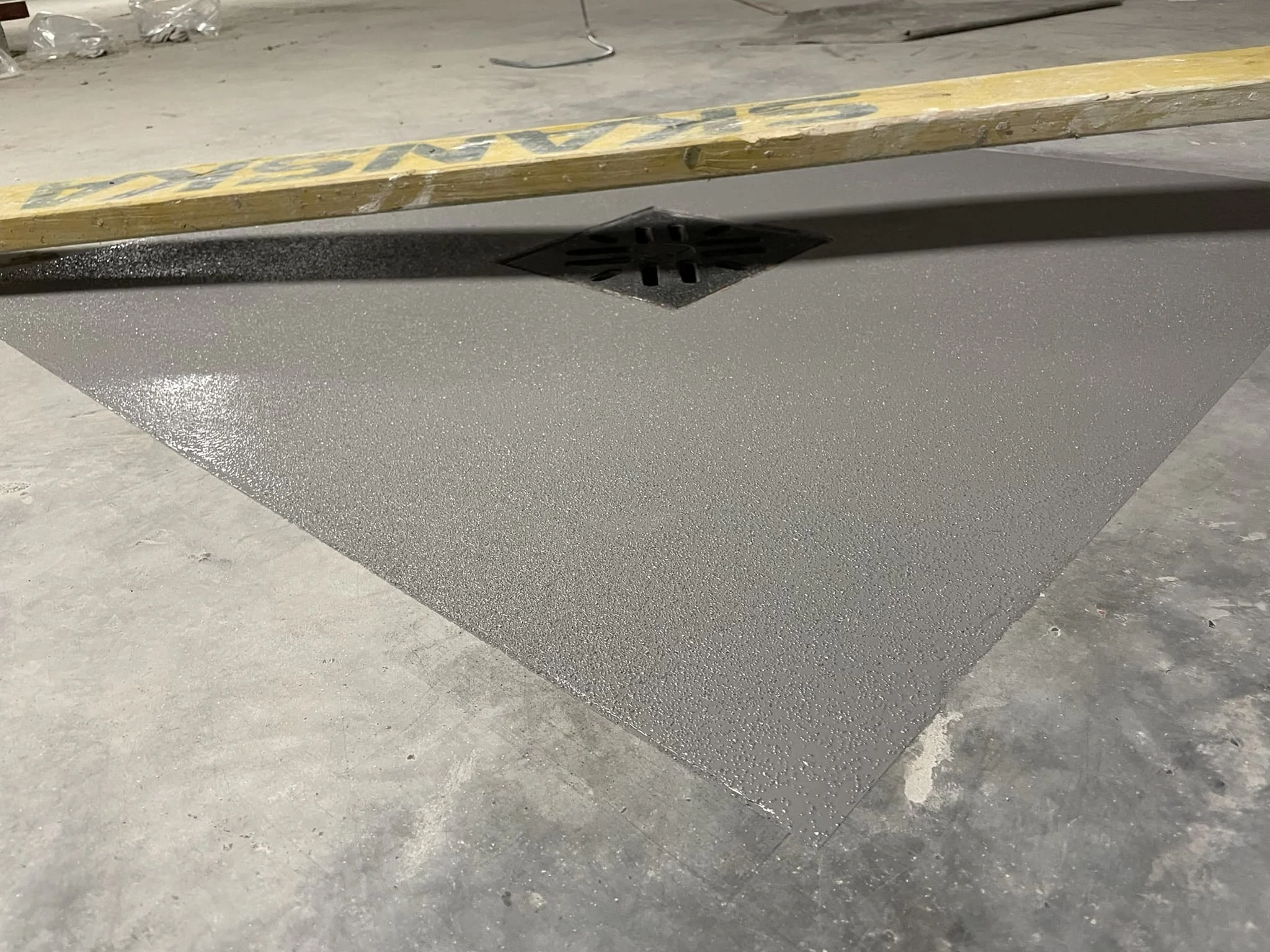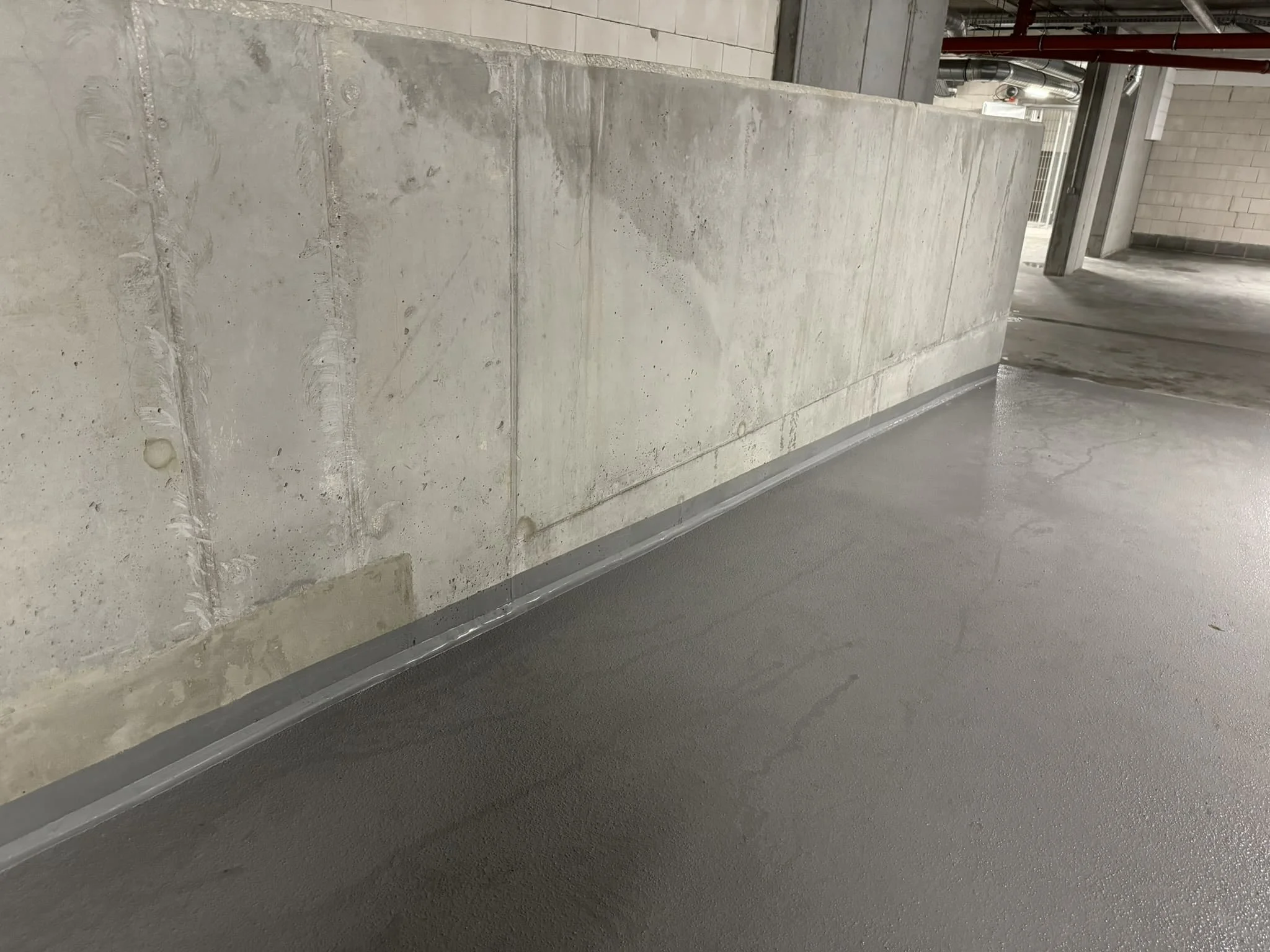The garage is a place that often receives all sorts of impacts, namely mud, road salt, oil, gasoline, the weight of the car, sneaky stains, and tire rubber.
A garage is a space often exposed to various elements: mud, road salt, oil, gasoline, the weight of a vehicle, stubborn stains, and tire marks. But what happens to the concrete?
Ordinary concrete quickly becomes dusty, stains, and is difficult to keep clean. That's why resin floors have become so popular - sealed, easy to clean, and simply beautiful. Below, you'll find an accessible overview of the four most popular types of resin for garages: epoxy, polyurethane, methacrylic (MMA), and polyaspartic. No engineering jargon needed—simple terms, with tips on when to choose which one.
Why even have resin in the garage?
It's airtight, doesn't absorb oil or water, and makes cleaning easier. It's dust-free, so no more gray concrete dust. It can withstand loads, tires, a lift, and shelving. Anti-slip properties can be added, which is important for water and mud. Available in a variety of finishes, from matte gray to decorative flakes and high gloss.
What to remember before choosing a system
The concrete must be in good condition, free of loose fragments. Cracks and imperfections can be repaired. Fresh screeds must dry; in case of ground moisture, a moisture barrier (often an epoxy primer) is necessary. Temperature and season: some resin floors dry in the cold, others need warmth. If you have a glass door or a garage that is frequently open, UV resistance is important (not all resins offer this).
Safety and odor: Some epoxy or polyurethane resin floors have a strong odor upon application – ventilation is important. Smooth resin is slippery when wet; adding quartz or microbeads solves the problem. Some systems take days to dry, others in a few hours – can you turn off your garage for longer?
The cost depends on the type of resin, thickness and number of layers.

Types of resins for garages – the most important features
1. Epoxy resin – a garage classic. Tough, durable, and economical.
Very high resistance to abrasion and chemicals (oil, fuel, brake fluid). Good bond to concrete, available in many colors, and can be applied in a thicker, self-leveling layer. Best price/durability ratio.
SPoor UV resistance - may yellow or chalk over time, especially with light colors. A UV-resistant topcoat (e.g., polyurethane) helps. Harder and more "glassy" - less resilient to point impacts and substrate movement than a polyurethane resin floor. Drying time is usually 12-24 hours before foot traffic, with car use only after 3-7 days (depending on temperature). Sensitive to moisture in the substrate during curing (blisters may form).
When you want a reasonable price, excellent mechanical and chemical resistance, and the ability to give the floor time to cure. For garages without constant sunlight or with the addition of a UV varnish on top.
2. Polyurethane resin (PU) More flexible and UV resistant (especially aliphatic systems).
Flexible – withstands impact, vibration, and temperature changes better than epoxy floors. UV and color resistance; aliphatic PU does not yellow, retains its color and shine for a long time. Good underfoot feel; you can choose from matte, semi-matte, or glossy finishes.
Typically slightly softer than epoxy, it can scratch more easily (small micro-scratches). It can "bubble" when applied in damp conditions (reaction with water vapor), requiring careful attention to conditions. Often more expensive than epoxy, and requires longer application times.
When you have a lot of sunlight in your garage or want a very stable color. When you want greater resistance to impact and subfloor movement (e.g., structural cracks are sealed, but the floor "works").
3. Methacrylic resin (MMA) Express and "indestructible" in difficult conditions, but with a strong odor.
Rapid curing, often 1–2 hours for walking, 2–4 hours for light traffic, works even at low temperatures (even near 0°C). Very good chemical and mechanical resistance. Tolerates wetter substrates compared to epoxy/PU.
A very intense odor during application requires excellent ventilation and experience. It can be troublesome in residential buildings. The price is usually the highest among comparable systems. Quick curing requires a skilled team—this is a system for resin flooring professionals.
When you need to build a garage immediately, even in cold weather, and you can't wait a few days. When conditions are difficult (humidity, low temperatures), and durability is paramount.
4. Polyaspartic resin (polyaspartic) A more modern variety from the polyurethane/polyurea family – fast, UV-resistant and very versatile.
Fast curing, often 2-4 hours between coats, and typically 24-48 hours after application (depending on the product). High UV resistance – non-yellowing, also suitable as an epoxy topcoat. Can be applied over a wider temperature range, has high clarity and a beautiful finish. Low emissions (often low VOC) and a lower odor than MMA.
Short "working window" – work quickly (gels quickly). Requires monitoring humidity and temperature to avoid fogging or bubbles. Price higher than epoxy, usually similar or lower than MMA.
When you want to install a resin floor in a weekend and have excellent UV resistance. As a quick, UV-resistant topcoat over epoxy (a great combination: epoxy as the "muscle," polyaspartic acid as the "armor").

How to choose the right system for your needs – simple scenarios
The best price to durability ratio, typical 2-car garage - 3-layer epoxy floor, optional PU or polyaspartic varnish on top for UV and tire mark resistance.
Garage exposed to a lot of sunlight or you want a "showroom" look without yellowing - aliphatic polyurethane or polyaspartic (alone or as a topcoat for epoxy).
Short on time, cold, you want to drive in quickly - MMA or polyaspartic (also fast, although usually slower than MMA).
Risk of moisture from the ground - epoxy primer - moisture barrier, then main layers, MMA can be tolerant to moisture, but it is an expensive route.
High slip and impact resistance - quartz-coated system (epoxy or MMA as a binder), UV-resistant varnish on top.
Thickness, anti-slip and accessories
Thin-coat "painting" (approx. 300 micrometers) – the cheapest, good for even surfaces. Less resistant to impacts and "hot-tire pickup" (marks and localized peeling from hot tires). Self-leveling layer (approx. 3 mm) – much more durable, nice smooth surface, can be added with a slight anti-slip effect.
Resin flooring system with quartz grit or decorative flakes - highly resistant and practical, the texture masks minor dirt and scratches. Anti-slip properties are controlled by the amount and fraction of grit added. Finishes include matte, semi-gloss, or gloss. Matte conceals scratches better, while gloss looks richer but allows for more visibility.
Preparation and execution – in brief
Check the moisture content and condition of the concrete. A new screed typically takes 4-6 weeks to settle. Perform a simple film test (for steam buildup). Mechanical preparation – grinding or shot-blasting to open the pores and remove cement laitance, paint, and dirt. Vacuum thoroughly.
Floor repairs should be filled with repair mortar or epoxy putty, cracks should be widened, and resin with quartz sand should be applied. The primer, usually epoxy, sometimes polyurethane, should soak into the concrete and bind it. In case of moisture, a special primer/barrier should be used. The base layer should be a self-leveling screed or a "roller and roller" in 1-2 passes, depending on the system. Anti-slip primer can be added.
Topcoat for UV protection, scratch resistance, and easier cleaning (often PU or polyaspartic). Monitor temperature and dew point (the substrate must be warmer than the air to prevent condensation). Good ventilation is essential.

Drying time and when can you drive in?
Epoxy - walk-in 12-24 hours, walk-in 3-7 days. Polyurethane - walk-in 12-24 hours, walk-in 2-5 days. Polyaspartic - walk-in 2-4 hours, walk-in usually 24-48 hours. MMA - walk-in 1-2 hours, walk-in often after 4-24 hours.
These are approximate values, check the product card and remember that cold extends and heat shortens the times!
Care and common problems
Clean with warm water and a mild detergent (pH neutral). Avoid aggressive solvents. Rinse off salt and mud regularly. In winter, a rubber mat is a good idea. Tire marks (so-called hot-tire pickup) are most often the result of poor surface preparation, too thin a coating, or cheap materials. A thick layer of resin flooring, a good primer, and a UV/temperature-resistant varnish (PU or polyaspartic) can help.
Scratches are more visible in gloss. Choose a semi-gloss/matte finish or a powder-coated system if you want to mask them. Epoxy without UV varnish may discolor (yellow) over time – if exposed to a lot of sunlight, add a UV-resistant topcoat.
Application security
Provide ventilation. MMA has a very strong odor, but any resin floor requires ventilation. Wear gloves, goggles, and, if the odor is strong, a half-mask with an organic vapor filter. Do not smoke or use open flames while working.
A short summary of the selection
Budget-friendly and durable – epoxy. If exposed to sunlight, add a PU/polyaspartic varnish. UV protection, nice appearance, and better impact resistance – aliphatic polyurethane or polyaspartic acid.
Quick and cool - MMA resin flooring (strongest odor) or polyaspartic acid (fast and without such an intense odor). Anti-slip and harsh conditions - a quartz-coated system, epoxy or MMA binder, and a UV-resistant varnish.
The best "gold standard" for a private garage is often solidly prepared concrete + epoxy primer/barrier + epoxy coat (thicker, self-leveling) + polyaspartic or polyurethane varnish resistant to UV and tire marks. You get a hard base, a beautiful finish, and years of peace of mind. If you want to do it in a weekend, consider a full polyaspartic system.





